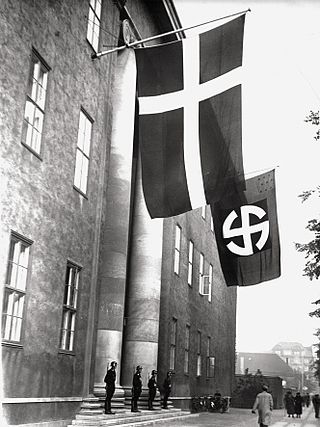
At the outset of World War II in September 1939, Denmark declared itself neutral, but that neutrality did not prevent Nazi Germany from occupying the country almost immediately after the outbreak of war, lasting until Germany's defeat. The decision to occupy Denmark was taken in Berlin on 17 December 1939. On 9 April 1940, Germany occupied Denmark in Operation Weserübung. The Danish government and king functioned in a relatively normal manner until 29 August 1943, when Germany placed Denmark under direct military occupation, which lasted until the Allied victory on 5 May 1945. Contrary to the situation in other countries under German occupation, most Danish institutions continued to function relatively normally until 1945. Both the Danish government and king remained in the country in an uneasy relationship between a democratic and a totalitarian system until 1943 when the Danish government stepped down in protest against German demands that included instituting the death penalty for sabotage.
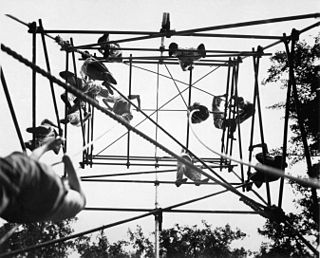
Operation Jedburgh was a clandestine operation during World War II in which three-man teams of operatives of the British Special Operations Executive (SOE), the U.S. Office of Strategic Services (OSS), the Free French Bureau central de renseignements et d'action and the Dutch and Belgian armies in exile were dropped by parachute into occupied France, the Netherlands and Belgium. The objective of the Jedburgh teams was to assist allied forces who invaded France on 6 June 1944 with sabotage and guerrilla warfare, and leading local resistance forces in actions against the Germans.

The Danish resistance movements were an underground insurgency to resist the German occupation of Denmark during World War II. Due to the initially lenient arrangements, in which the Nazi occupation authority allowed the democratic government to stay in power, the resistance movement was slower to develop effective tactics on a wide scale than in some other countries.

The Germanic SS was the collective name given to paramilitary and political organisations established in parts of German-occupied Europe between 1939 and 1945 under the auspices of the Schutzstaffel (SS). The units were modeled on the Allgemeine SS in Nazi Germany and established in Belgium, Denmark, the Netherlands, and Norway—population groups who were considered to be especially "racially suitable" by the Nazis. They typically served as local security police augmenting German units of the Gestapo, Sicherheitsdienst (SD), and other departments of the German Reich Security Main Office (RSHA), rendering them culpable for their participation in Nazi atrocities.

BOPA was a group of the Danish resistance movement; it was affiliated with the communists and developed after the occupation of Denmark by Nazi Germany during the Second World War.
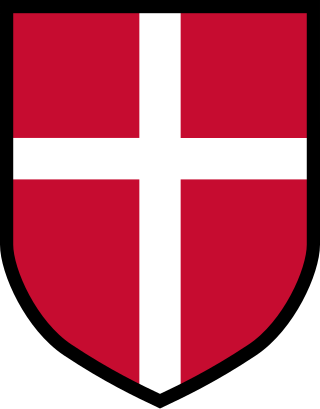
Free Corps Denmark was a unit of the Waffen-SS during World War II consisting of collaborationist volunteers from Denmark. It was established following an initiative by the National Socialist Workers' Party of Denmark (DNSAP) in the immediate aftermath of the German invasion of the Soviet Union in June 1941 and subsequently endorsed by Denmark's government which authorised officers of the Royal Danish Army to enlist in the unit. It participated in fighting on the Eastern Front and was disbanded in 1943. During the course of the war, approximately 6,000 Danes joined the corps, including 77 officers of the Royal Danish Army.
Holger Danske was a Danish resistance group during World War II. It was among the largest Danish resistance groups and consisted of around 350 volunteers towards the end of the war. The group carried out sabotage operations, including blowing up railway lines strategically important to the Germans. Among their largest sabotage actions was the blowing up of the Forum Copenhagen in 1943. Holger Danske was responsible for around 200 killings of informers who had revealed the identity and/or the whereabouts of members of the resistance. The group was named after the legendary Danish hero Holger Danske.

Christian Frederik von Schalburg was a Danish army officer, the second commander of Free Corps Denmark and brother of Vera Schalburg.
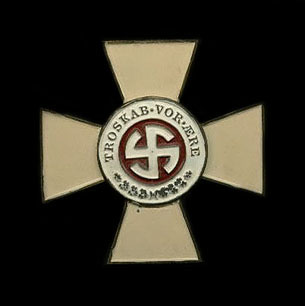
The Schalburg Cross was a decoration awarded to officers, NCOs and enlisted men in the Danish Schalburg Corps during World War II.
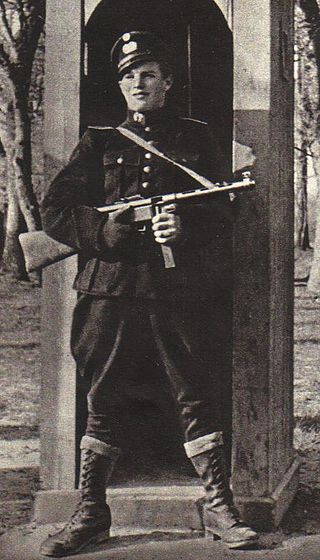
The HIPO Corps was a Danish auxiliary police corps, established by the German Gestapo on 19 September 1944, when the Danish civil police force was disbanded and most of its officers were arrested and deported to concentration camps in Germany. The majority of HIPO members were recruited from the ranks of Danish Nazi collaborators. The word HIPO is an abbreviation of the German word Hilfspolizei.
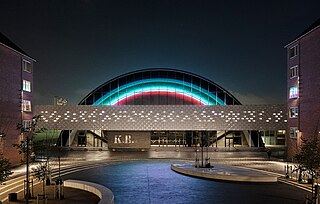
K.B. Hallen is a multi-purpose arena located at Peter Bangs Vej in the Frederiksberg district of Copenhagen, Denmark. Originally, it was used primarily for badminton, tennis, basketball and volleyball, but also hosted other events, including dance tournaments and flea markets.
The Danish People's Defence was the civilian arm of the Danish Schalburg Corps active from April 1943 to August 1944, in support of the German occupation of Denmark. It was made up of civilians, some of whom were expected to provide financial backing.
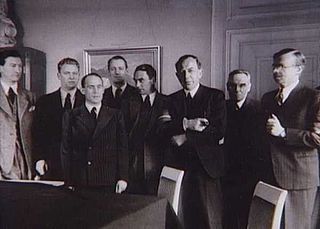
The Danish Freedom Council was a clandestine body set up in September 1943 in response to growing political turmoil surrounding the occupation of Denmark by German forces during the Second World War.
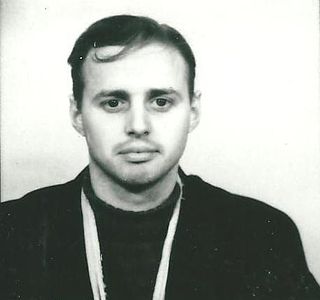
Jørgen Kieler was a Danish physician, remembered primarily for his participation in resistance activities under the German occupation of Denmark in the early 1940s. He was captured and was placed in a prison and Nazi concentration camps. Saved by the White Buses of the Bernadotte rescue, Kieler was treated for tuberculosis for two years after his release.

The German invasion of Denmark, was the German attack on Denmark on 9 April 1940, during the Second World War. The attack was a prelude to the invasion of Norway.

Hellerup is a very affluent district of Gentofte Municipality in the suburbs of Copenhagen, Denmark. The most urban part of the district is centred on Strandvejen and is bordered by Østerbro to the south and the Øresund to the east. It comprises Tuborg Havn, the redeveloped brewery site of Tuborg Breweries, with the Waterfront Shopping Center, a marina and the headquarters of several large companies. Other parts of the district consist of single family detached homes. Local landmarks include the science centre Experimentarium and the art Øregaard Museum.
The Peter group was a paramilitary group created in late 1943 during the occupation of Denmark by the German occupying power. The group conducted counter-sabotage, also known as Schalburgtage, in response to the Danish resistance movement sabotage actions. The group was named after its German instigator Otto Schwerdt aka Peter Schäfer.
A Clearing murder was a revenge killing of a known and popular Dane in the last part of the German occupation of Denmark during World War II. When a German or Danish soldier or informant was killed by the Danish resistance movement, the Peter group performed one or more clearing murder.

Jørgen Haagen Schmith, also spelled Jørgen Haagen Schmidt, known during the war by the codename Citronen ), was a renowned fighter in the Danish resistance movement during the German Occupation of Denmark (1940–1945). He was a saboteur, including his involvement in the bombing of the Forum Copenhagen. He was also a rescuer and liquidator. He died after a multi-hour firefight with German soldiers on 15 October 1944.

The Battle of Isefjord was a clash that occurred when the coastal defence ship HDMS Niels Juel was attacked by German forces as she tried to escape to neutral Sweden.















